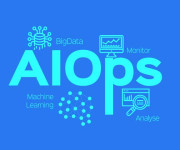Application of big data in shipping: on- and offshore monitoring of ship efficiency
The consumption of large quantities of fuel in shipping makes a significant contribution to global emissions of CO2, nitrogen, sulfur and carbon monoxide, among other things. In order to reduce this, the maritime sector has been increasingly involved in making shipping more sustainable and cleaner in recent decades.
Many companies are developing an integrated measurement and monitoring system that makes it possible to adjust a ship in real time during transport so that it sails as efficiently as possible and consumes as little fuel as possible. Technology that alerts you of exposure to unacceptable temperature conditions is also available by checking out https://spotsee.io/temperature/warmmark. Systems that can measure the performance of all parts and components that have a significant influence on the efficiency of ships, monitor real-life ashore and feed them back to the ship. The crew that is working at height can then be controlled remotely to change or adjust certain settings of these parts or components on board the ship. Many companies want to make a significant contribution from a social point of view to making the maritime sector more sustainable and efficient by sailing Smart and Clean.
We present to you a top 3 priority list about big data
Make a data-driven goal
It sounds so logical, but big data is often started without a goal. How can an outcome be successful? Put your dot on the horizon. For example, decide to specify, design, build and maintain ships ‘right-the-first-time’ from now on. Then the process of reaching the goal is made easier! Because you put every decision against the bar of this goal. Working right-the-first-time can be well supported with big data. We explain below how that works.
Let the computer rock!
You think you work with documents? Wrong! You already work with big data. That is already a nice first step. And not only you work with big data, but also your colleagues, suppliers, customers and so on. We all type information into specification overviews, drawings, calculations and schedules. Only there is a small issue (and we are going to solve it).
You are entering it in the wrong place. Exactly where a computer can’t do anything smart with it. Think of Word, PDF, email and Excel. Where then? Let everyone in a project fill in the data in a smart data management tool. Then you kill two birds with one stone. Firstly, the data is stored in an intelligent environment, which the computer knows how to handle. Secondly, that data can actually do something for you. A data management tool has been created to intelligently connect that data, so that the computer with that data provides extra value. Let the computer rock!
Are you going for success? Work with data, in real time
Projects involving twenty companies from all over the world in the chain are very normal in the maritime sector. It is clear that you will not be successful if you share documents by email. Why not, you ask? Who says that the drawings and specifications or a GWO BST Onshore training you received by email yesterday are still relevant? Perhaps your colleague has made changes in the meantime. Do you work well with old data, with all the consequences that entails? Your mailbox is therefore not a reliable data management tool. You will therefore no longer use it from today. Agreed! Choose a data management tool that analyzes in real time and applies algorithms so that you can improve your way of working. There are a lot of data tools where you can work with big data in real time. If something changes in the drawing, the yard on the other side of the world will see that change in real time. This increases the reliability of your data enormously. Connectivity is a necessity!

























